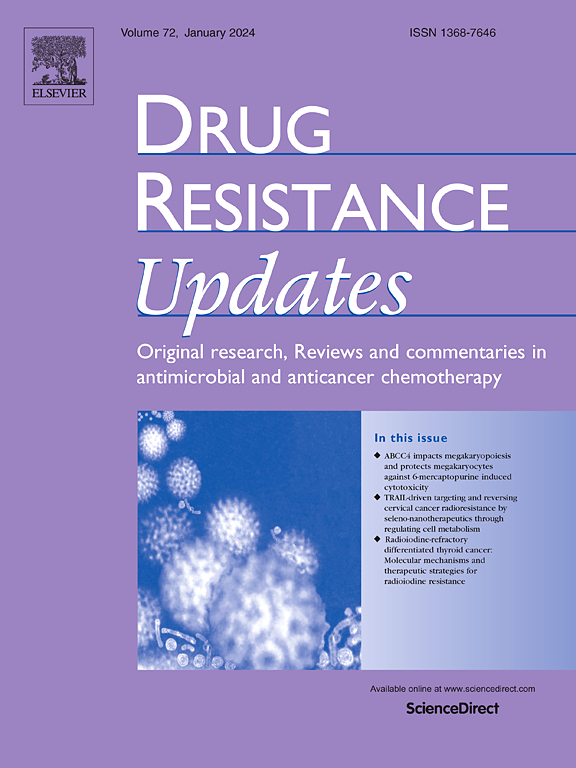Resistance to immunotherapy in non-small cell lung cancer: Unraveling causes, developing effective strategies, and exploring potential breakthroughs
IF 15.8
1区 医学
Q1 PHARMACOLOGY & PHARMACY
引用次数: 0
Abstract
Over the last two decades, advancements in deciphering the intricate interactions between oncology and immunity have fueled a meteoric rise in immunotherapy for non-small cell lung cancer, typified by an explosive growth of immune checkpoint inhibitors. However, resistance to immunotherapy remains inevitable. Herein we unravel the labyrinthine mechanisms of resistance to immunotherapy, characterized by their involvement of nearly all types of cells within the body, beyond the extrinsic cancer cells, and importantly, such cells are not only (inhibitory or excitatory, or both) signal recipients but also producers, acting in a context-dependent manner. At the molecular level, these mechanisms underlie genetic and epigenetic aberrations, which are regulated by or regulate various protein kinases, growth factors, and cytokines with inherently dynamic and spatially heterogeneous properties. Additionally, macroscopic factors such as nutrition, comorbidities, and the microbiome within and around organs or tumor cells are involved. Therefore, developing therapeutic strategies combined with distinct action informed by preclinical, clinical, and real-world evidence, such as radiotherapy, chemotherapy, targeted therapy, antibody-drug conjugates, oncolytic viruses, and cell-based therapies, may stand as a judicious reality, although the ideality is to overcome resistance point-by-point through a novel drug. Notably, we highlight a realignment of treatment aims, moving the primary focus from eliminating cancer cells -- such as through chemotherapy and radiotherapy -- to promoting immune modulation and underscore the value of regulating various components within the host macro- or micro-environment, as their effects, even if seemingly minimal, can cumulatively contribute to visible clinical benefit when applied in combination with ICIs. Lastly, this review also emphasizes the current hurdles scattered throughout preclinical and clinical studies, and explores evolving directions in the landscape of immunotherapy for NSCLC.
求助全文
约1分钟内获得全文
求助全文
来源期刊

Drug Resistance Updates
医学-药学
CiteScore
26.20
自引率
11.90%
发文量
32
审稿时长
29 days
期刊介绍:
Drug Resistance Updates serves as a platform for publishing original research, commentary, and expert reviews on significant advancements in drug resistance related to infectious diseases and cancer. It encompasses diverse disciplines such as molecular biology, biochemistry, cell biology, pharmacology, microbiology, preclinical therapeutics, oncology, and clinical medicine. The journal addresses both basic research and clinical aspects of drug resistance, providing insights into novel drugs and strategies to overcome resistance. Original research articles are welcomed, and review articles are authored by leaders in the field by invitation.
Articles are written by leaders in the field, in response to an invitation from the Editors, and are peer-reviewed prior to publication. Articles are clear, readable, and up-to-date, suitable for a multidisciplinary readership and include schematic diagrams and other illustrations conveying the major points of the article. The goal is to highlight recent areas of growth and put them in perspective.
*Expert reviews in clinical and basic drug resistance research in oncology and infectious disease
*Describes emerging technologies and therapies, particularly those that overcome drug resistance
*Emphasises common themes in microbial and cancer research
 求助内容:
求助内容: 应助结果提醒方式:
应助结果提醒方式:


